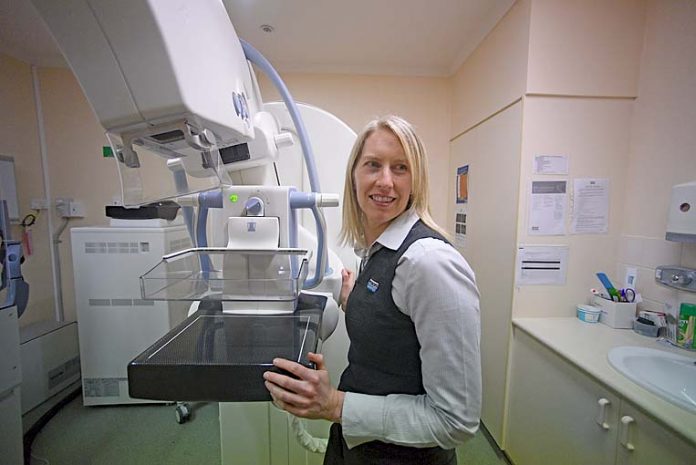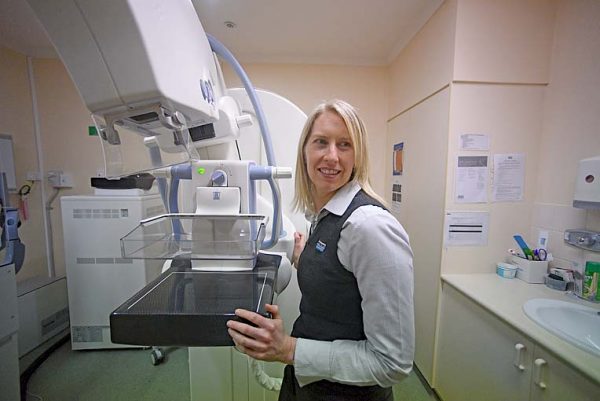

LIMESTONE Coast cancer detection services have been significantly boosted amid cutting edge breast imaging technology being installed at Mount Gambier Hospital’s Benson Radiology site.
Patients now have access to a tomosynthesis breast imaging unit, which is also known as 3D mammography.
Since the equipment’s installation three weeks ago, on average 11 women per day are undergoing the potentially lifesaving advanced imaging.
The new tomosynthesis unit allows medical professionals to see through the breast tissue more easily, allowing earlier detection of cancers.
The imaging equipment is also resulting in less women travelling to Adelaide to receive the specialist service.
Kalangadoo resident Kaye Main – one of the first patients to be screened by the new 3D mammography unit – yesterday said the new equipment was a “great step forward” for regional women.
The 59-year-old – who survived breast cancer in 2015 – said the new technology was welcomed given she now had yearly surveillance.
“Being able to access the latest in mammogram technology right here in Mount Gambier is terrific,” Ms Main said.
“The experience with this new machine is essentially the same as other mammography units I have used.
“The difference is it has an arm that moves to take images from different angles.”
Ms Main described the imaging as “a quick, easy and comfortable examination”.
“Just to know that my breast specialist is seeing as much imaging detail as possible gives me peace of mind,” Ms Main said.
Benson Radiology area manager Cathy Lunnay said the new technology was being used for all mammograms at the company’s hospital site.
“It is definitely a step forward compared with the conventional 2-D imaging – you can pick up finer detail,” Ms Lunnay said.
With the BreastScreen SA mobile unit currently located at the Mount Gambier Hospital site, she said Benson had been busy with referrals and follow-ups.
“The breast screen mobile unit will be here until February next year,” Ms Lunnay said.
“It is very important women look after themselves.
“Early detection can have such a huge change in the outcome of a patient.
“Anybody over the age of 40 can contact BreastScreen SA and have a screening mammography at no charge.”
Different to traditional mammography, tomosynthesis acquires images of the breast from different angles.
The x-ray tube moves in an arc capturing multiple “slices”, which are then reconstructed to create a three-dimensional view of the breast.
Benson Radiology managing partner Dr Dale Allison said the new mammography service was going to be of great benefit to patients and referring doctors.
“Early diagnosis of breast cancer is very important, it allows cancers to be found sooner and treated more successfully, resulting in saved lives,” Dr Allison said.
“Mammography is still the best method we have for early breast cancer detection.
“While traditional mammography has served us very well, the new tomosynthesis unit allows us to see through the breast tissue more easily.”
“It enables us to visualise a sequential stack or series of thin slices of the breast, helping to minimise the risk of lesions being masked.”
The 3D mammography was particularly beneficial for women with dense breasts.
“It is recognised that women with mammographically dense breasts are at greater risk of developing cancer and also at an increased risk of cancers being masked within dense breast tissue,” Dr Allison said.
“While breast tomosynthesis studies are extremely useful for a wide range of women, they have been shown to be of particular benefit to those with dense breasts – which is approximately 40pc of women.”







